Trees Birds Mammals Fish Amphibians Reptiles
Wild Algarve
Bookshop
Exidia recisa (Ditmar) Fr. - Amber Jelly
Phylum: Basidiomycota - Class: Tremellomycetes - Order: Auriculariales - Family: Auriculariaceae
Distribution - Taxonomic History - Etymology - Identification - Culinary Notes - Reference Sources
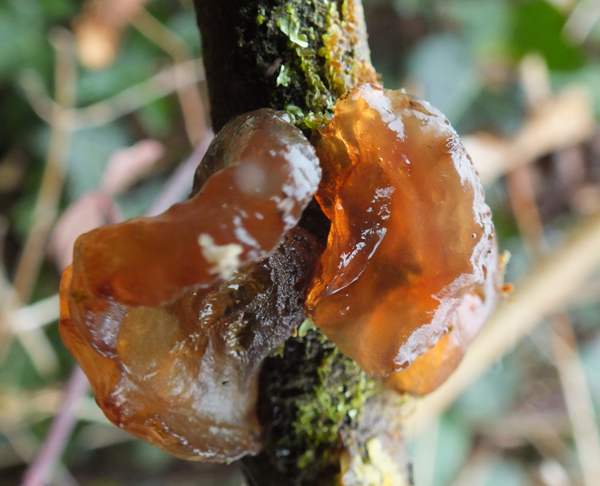
Amber Jelly Exidia recisa is mainly a winter fungus, appearing on dead twigs of standing or fallen willows (and very occasionally other hardwoods). Often seen glistening at head height on a crisp clear day when sunlight makes the amber fruitbodies glow brilliantly, this remarkable fungus can dry out and shrink to almost nothing. Don't be fooled: it is not dead. After rain, or simply a heavy early morning fall of dew, the fruitbodies can rehydrate and recommence releasing their unseen clouds of microscopically tiny spores.
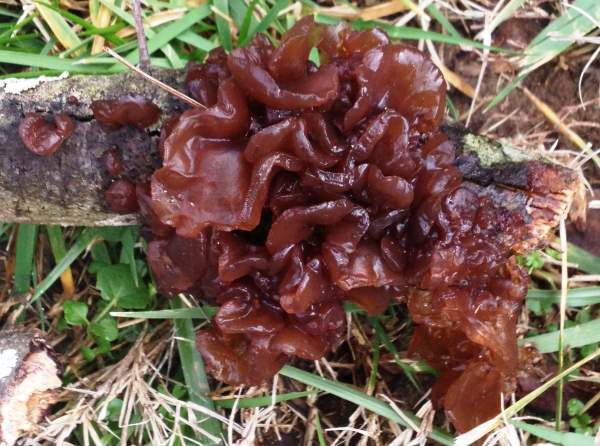
Distribution
Exidia recisa is fairly common and widely distributed across the northern hemisphere, including throughout Britain and Ireland as well as most of mainland Europe, northern Asia and North America. It seems to be more abundant in cool damp (predominantly northern) climes and particularly near rivers lakes and other sources of humid air.
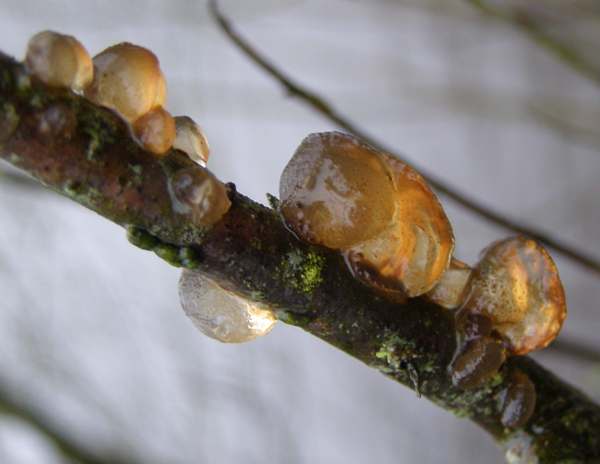
Taxonomic history
This wobbly jelly fungus was originally found growing on willow twigs in Germany, where it was described in 1813 by a cleric, Fr. L. P. Ditmar, who named it Tremella recisa.
Little seems to be known about Fr. Ditmar other than his few mycological publications. Within a decade of Ditmar's publication, the species was transferred to the genus Exidia in 1822 by the great Swedish mycologist Elias Magnus Friesand so its scientific name became Exidia recisa.
Synonyms of Exidia recisa include Tremella recisa Ditmar and Tremella salicum Pers.

Above: The The pinched, chipped/faceted edges of this mature E.recisa helps differentiate it from E. nigricans.
Etymology
The specific epithet recisa means 'cut off' - a reference to the truncated shape of typical fruitbodies.
The synonymous E. salicum is derived from the main substrate upon which this jelly fungus occurs - willows (or sallows), Salix species.
Exidia recisa now has the formally accepted English common name Amber Jelly, but some people still refer to it as either Willow Jelly or Amber Jelly Roll.
Identification guide
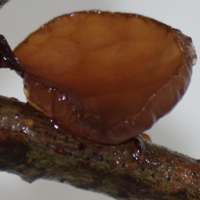 |
Description
Individual fruit bodies are cessile or have very short stalks; initially broadly conical becoming more variable in shape and typically 1 to 3cm across at maturity. |
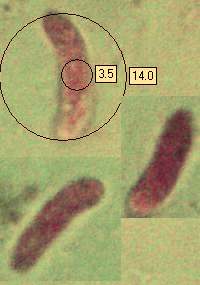 |
Spores
Allantoid (sausage-shaped), 14-15 x 3-3.5µm.
Spore print
White. |
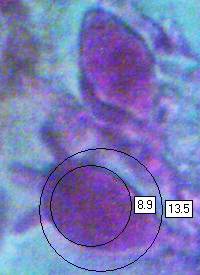 |
Basidia
Ellipsoidal, septate (divided by central separating walls, 8-15 x 6-10µm; two- or more commonly four-spored, with elongated sterigmata (they can be ~100 x 3µm when fully mature). |
Odour/taste |
Not distinctive. |
Habitat & Ecological role |
Saprobic, on dead and decaying hardwood - nearly always willow (Salix spp.). |
Season |
Late autumn, winter and early spring in Britain and Ireland. |
Similar species |
Tremella mesenterica is yellow and has a brain-like structure.
Exidia glandulosa has black fruitbodies that are more irregular in shape than those of Exidia recisa.
Exidia repanda is very similar but usually more rounded and button-like rather than sharply truncated; it occurs on birch trees rather than willows. Some people refer to it as Birch Jelly. |
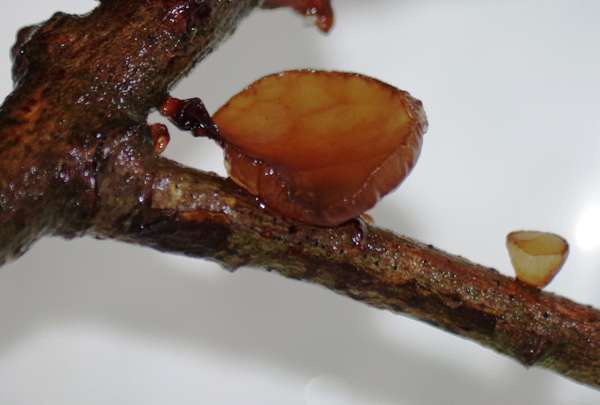
Culinary Notes
Autumn and winter are the best times to look for this jelly fungus, which is of dubious edibility and in any case is too insubstantial to be worth collecting for food.
Reference Sources
Mattheck, C., and Weber, K. Manual of Wood Decays in Trees. Arboricultural Association 2003.
Breitenbach, J., Kränzlin, F., Fungi of Switzerland - Non gilled fungi, Heterobasidiomycetes, Aphyllophorales, Gasteromycetes 2: 412 pp. (1986)
Pat O'Reilly, Fascinated by Fungi, 2016.
BMS List of English Names for Fungi
Dictionary of the Fungi; Paul M. Kirk, Paul F. Cannon, David W. Minter and J. A. Stalpers; CABI, 2008
Taxonomic history and synonym information on these pages is drawn from many sources but in particular from the British Mycological Society's GB Checklist of Fungi.
Acknowledgements
This page includes pictures kindly contributed by Arnor Gullanger (Gullen, Norway) and Carol Romashko (Roswell, Georgia, USA).
Top of page...
Fascinated by Fungi. Back by popular demand, Pat O'Reilly's best-selling 450-page hardback book is available now. The latest second edition was republished with a sparkling new cover design in September 2022 by Coch-y-Bonddu Books. Full details and copies are available from the publisher's online bookshop...